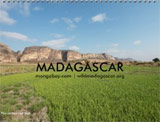
Calendars | Shirts

Calendars | Shirts
|
|
Page 1:
Panama golden frog (Atelopus zetecki) |
Green and black poison dart frog (Dendrobates auratus) |
Blue poison dart frog (Dendrobates azureus) |
Strawberry poison-dart frog in bromeliad |
Yellow-Banded Poison Frog (Dendrobates leucomelas) |
Boophis (?) frog at Andasibe |
Boophis frog, Masoala National Park |
Boophis tree frog |
Frog in Isalo |
Gray frog in Isalo |
Green Climbing Mantella (Mantella laevigata) |
Mantella madagascariensis (Painted Mantella) |
Tomato frog |
White's Tree Frog (Litorea caerulea) |
Rainforest frog in leaf litter |
Unknown frog with broad tan and brown bands and blue spots |
Tree frog in the tropical forest of Borneo |
Yellow and brown toad in Sulawesi |
Green Poison Dar Frog, Costa Rica |
Glass Frog, Costa Rica |
Monkey frog (Phyllomedusa bicolor) |
Monkey frog (Phyllomedusa bicolor) |
Monkey frog (Phyllomedusa bicolor) |
Hyla rhodopepla tree frog on leaf |
Hyla rhodopepla tree frog on forest floor |
Cane toad (Bufo marinus) in the Amazon rainforest of Peru |
Cane toad (Bufo marinus) in the wild |
Monkey frog (Phyllomedusa bicolor) |
Hyla tree frog species |
Hyla tree frog species
Page 2:
Three-striped Poison dart frog (Epipedobates trivittatus) |
Monkey frog (Phyllomedusa bicolor) on forest floor |
Hyla tree frog close up |
Frog, Thailand |
Tree Frog, Thailand |
Spinosa frog (Paa boulengeri) |
Newt Hands |
Newt Hands |
Rough-Skinned Newt |
Colorado River toad or Sonoran Desert toad (Bufo alvarius) |
Dendrobates auratus poison-dart frog |
Green-and-black poison dart frog (Dendrobates auratus) |
Dendrobates pumilio - Strawberry poison-dart frog |
Strawberry poison-dart frog - Dendrobates pumilio |
Dendrobates pumilio in bromeliad |
Strawberry poison-dart frog in epiphyte |
Dendrobates pumilio in epiphyte |
European fire salamandar |
Kihansi spray toad (Nectophrynoides asperginis) |
Kihansi spray toad (Nectophrynoides asperginis) |
Kihansi spray toad (Nectophrynoides asperginis) |
Kihansi spray toad (Nectophrynoides asperginis) |
White's tree frog, brown in color |
White's tree frog, green in color |
Boophis frog |
Boophis albilabris frog |
Uknown tree frog on Nosy Mangabe |
Uknown ground frog on Nosy Mangabe |
Uknown leaf frog on Nosy Mangabe |
Frog in rainforest of Masoala NP |
Frog of the Masoala peninsula
Page 3:
Frog in leaf litter of Masoala NP |
Green striped frog |
Mantella betsileo frog |
Mantella aurantiaca frog |
Mantella betsileo frog |
Mantella laevigata frog |
Mantella laevigata |
Mantella madagascariensis frog in Ranomafana |
Painted Mantella (Mantella madagascariensis), Ranomafana |
Mantidactylus curtus |
Mantidactylus pulcher |
Mantidactylus pulcher frog |
Mantidactylus lugubris frog |
Mantidactylus lugubris frog |
Mantidactylus lugubris frog |
Plethodontohyla inguinalis frog |
Brown leaf frog in Gabon |
Brown frog on leaf in Ubud |
Tree frog in the Borneo rain forest |
Grey tree frog |
Giant cave-dwelling toad |
Argentine Horned Frog |
Acid Frog, Australia |
Acid Frog, Australia |
Acid Frog, Australia |
Poison Dart Frog, Costa Rica |
Toad, Costa Rica |
Dendrobates azureus
Page 4:
elves chasm frog, Grand Canyon |
elves chasm toad, Grand Canyon |
elves frog, Grand Canyon |
Toad, Honduras |
Toad, Honduras |
Golden Mantella, Madagascar |
Mantella Frog, Madagascar |
Mantella Frog, Madagascar |
Tree Frog, Madagascar |
Hyla tree frog |
White lined leaf frog (Phyllomedusea vaillanti) |
Tree Frog, Thailand |
Frog, Thailand |
Poison Arrow Frog, Venezuela |
Xenopus laevis |
Frog in leaf litter of Lake Bohinj |
Giant Chinese Salamander
|

